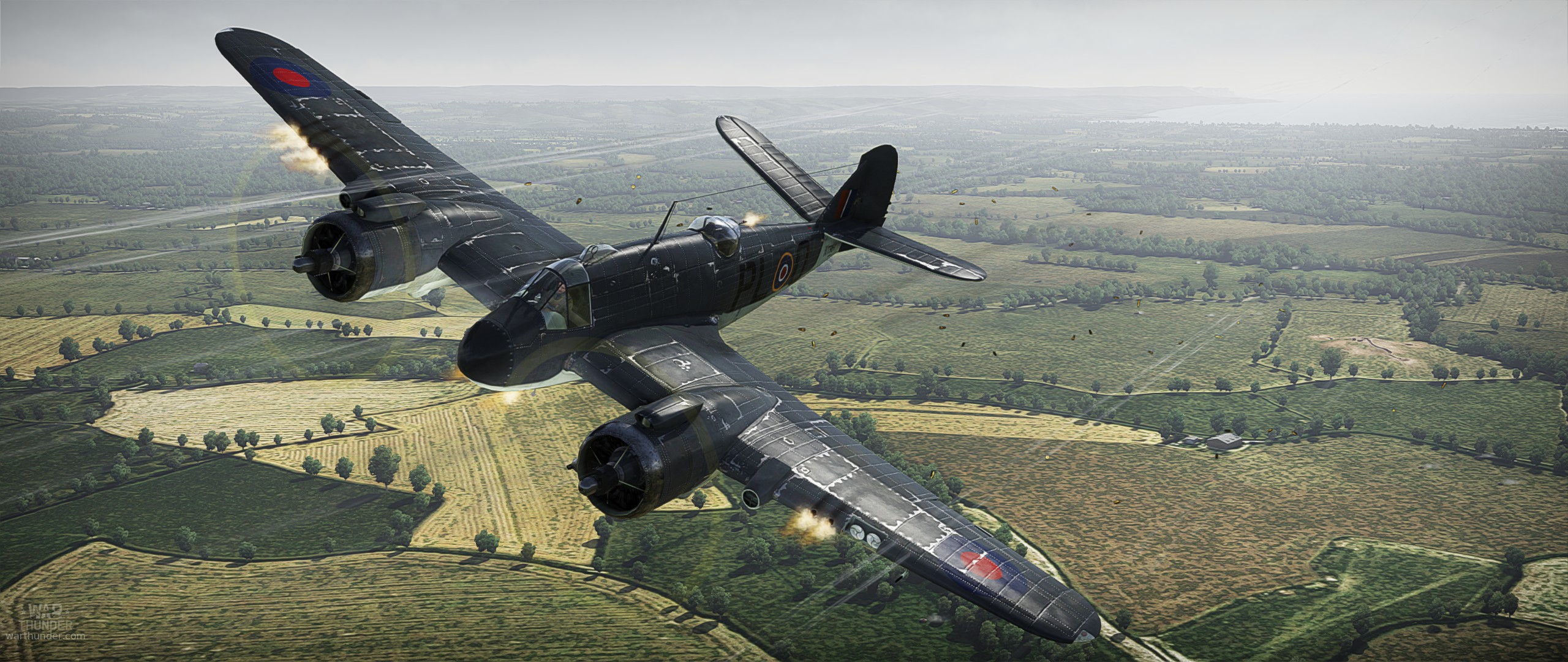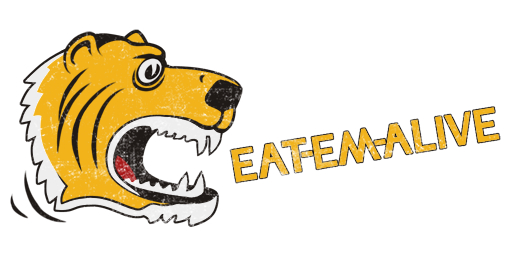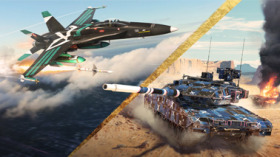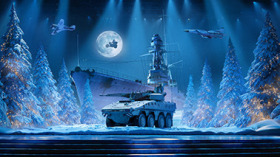
- Для PC
- Для Mac
- Для Linux
- ОС: Windows 10 (64 bit)
- Процессор: Dual-Core 2.2 GHz
- Оперативная память: 4 ГБ
- Видеокарта с поддержкой DirectX версии 11: AMD Radeon 77XX / NVIDIA GeForce GTX 660. Минимальное поддерживаемое разрешение – 720p.
- Сеть: Широкополосное подключение к Интернету
- Место на жестком диске: 22.1 Гб
- ОС: Windows 10/11 (64bit)
- Процессор: Intel Core i5 или Ryzen 5 3600 и выше
- Оперативная память: 16 ГБ
- Видеокарта с поддержкой DirectX 11 и выше: Nvidia GeForce 1060 и выше, Radeon RX 570 и выше
- Сеть: Широкополосное подключение к Интернету
- Место на жестком диске: 62.2 Гб
- Операционная система: Mac OS Big Sur 11.0
- Процессор: Core i5, минимум 2.2GHz (Intel Xeon не поддерживается)
- Оперативная память: 6 Гб
- Видеокарта: Intel Iris Pro 5200 (Mac) или аналогичная видеокарта AMD/Nvidia для Mac (минимальное поддерживаемое разрешение – 720p) с поддержкой Metal
- Место на жестком диске: 22.1 Гб
- Операционная система: Mac OS Big Sur 11.0
- Процессор: Intel Core i7 (Intel Xeon не поддерживается)
- Оперативная память: 8 Гб
- Видеокарта: Radeon Vega II и выше с поддержкой Metal
- Место на жестком диске: 62.2 Гб
- Операционная система: Современные дистрибутивы Linux 64bit
- Процессор: Dual-Core 2.4 ГГц
- Оперативная память: 4 Гб
- Видеокарта: NVIDIA GeForce 660 со свежими проприетарными драйверами (не старее 6 месяцев) / соответствующая серия AMD Radeon со свежими проприетарными драйверами (не старее 6 месяцев, минимальное поддерживаемое разрешение - 720p) с поддержкой Vulkan
- Место на жестком диске: 22.1 Гб
- Операционная система: Ubuntu 20.04 64bit
- Процессор: Intel Core i7
- Оперативная память: 16 Гб
- Видеокарта: NVIDIA GeForce 1060 со свежими проприетарными драйверами (не старее 6 месяцев) / Radeon RX 570 со свежими проприетарными драйверами (не старее 6 месяцев) с поддержкой Vulkan
- Место на жестком диске: 62.2 Гб
Bristol Beaufighter Mk.X from 144 Squadron, Dallachy Strike Wing, RAF 1945, PL-O (NT961),
camouflage by cerbera15 | download here
History:
Work on the the Bristol Beaufighter began in 1938, on the initiative of the Bristol aviation company, when it became apparent that diplomacy with Germany wasn’t working, and that Britain didn’t have a decent long range heavy fighter to hand. The Westland Whirlwind, which was intended to fill this role, had been delayed, so a stopgap measure was needed, and, like the Spitfire Mk. IX - another stop-gap solution - the Bristol Beaufighter became a firm favourite with its pilots.
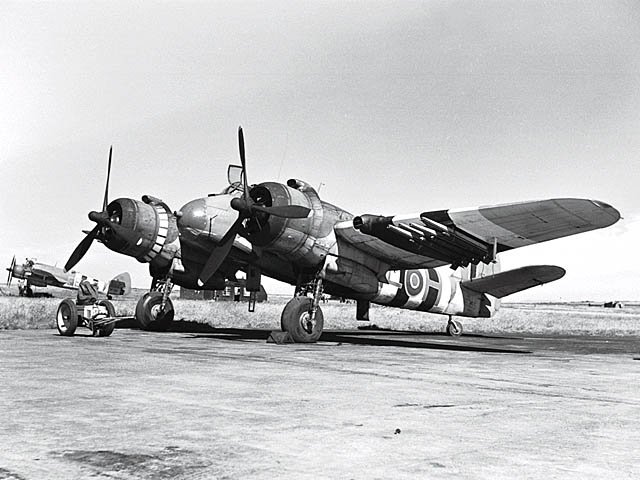 |
| Bristol Beaufighter Mk X, NE255/EE-H, of No. 404 Squadron RCAF at RAF Davidstow Moor |
The designers at Bristol, led by Leslie Frise and Roy Fedden, committed themselves to incorporating components from existing aircraft to speed up the manufacturing process, resulting in the Beaufighter’s wings, aft fuselage, control surfaces and landing gear being virtually identical to the Beaufort, but for a little local re-stressing here and there, and the nacelles being strengthened to take the Bristol Hercules 14-cylinder engines. This expediency allowed the company to complete a working prototype a mere 9 months after the completion of the detailed drawings.
Entering service in July 1940, the Bristol Beaufighter had an empty weight of 14,000 lbs or 6350 kg, a little under twice that of the Blenheim, and came with formidable hitting power, chiefly consisting of four 20mm Hispano cannon in the nose. And although an effective belt feed was available, a foul-up by the Air Ministry resulted in the first 400 aircraft being delivered with drum feeds, meaning that the observer sitting behind the pilot had to change them by hand, pulling the 60 round drums off racks and trying to slot them onto the guns correctly, often during rapid maneuvers. These were supplemented by six 7.7mm Browning machine guns mounted asymmetrically on the wings.
The other thing it carried of course was Airborne Interception radar. This meant that the British now not only had a method of detecting individual night-time fighters, but also the means to destroy them in what, for the German pilots, must have been the most shocking way possible. As for the Beaufighter pilots, the sturdy construction meant that it could remain airborne even after a great deal of punishment, but if the going got too tough, the two escape hatches in the belly were designed so that on opening, airflow was directed downward and created a pocket of still air for the pilot and observer to jump through, in theory allowing them to get clear of the aircraft structure. If on the other hand the aircraft had landed on its belly, the crew could leave using counterpart hatches in the roof.
The Beaufighter was adapted to a number of purposes, and went through a great number of marks, with the Mark. X being the most numerous of them, numbering 2,205 of the 5,562 Beaufighters constructed in the UK. This aircraft had the TF designation, marking it out as a torpedo fighter, but could it could also carry underwing rockets, and 1,000lb or 453kg of bombs which could be increased by the same weight again in lieu of a torpedo. The rockets mounted by the Mk. X came in two forms, with 60lb or 27 kg high explosive warheads, the damage from which was hardly trivial, however the 25lb or 11 kg solid steel warheads were found to be highly effective against shipping, being able to penetrate one side of a cargo ship, travel through its cargo of coal, and exit the other side leaving a three foot or one metre hole.
In War Thunder:
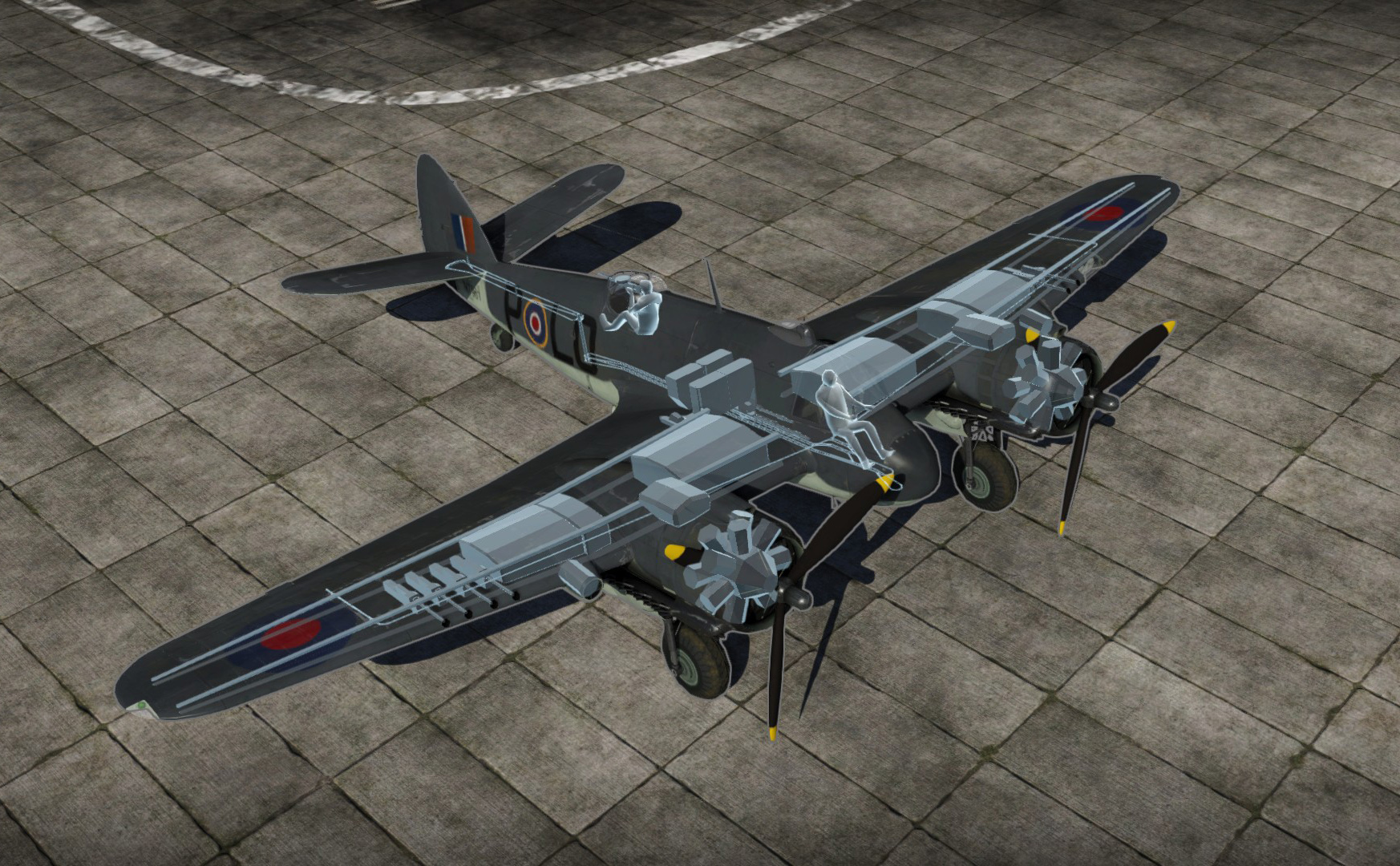 |
| X-ray view of Beaufighter Mk.X in War Thunder |
In the game the Mk. X is a Tier III aircraft with a Battle Rating of 3.7. It has a maximum speed of 324 mph or 522 kph, and a turn time of 26.5 seconds. It’s armed with 4 20mm Hispano cannon in the nose, supplied with 1,132 rounds of ammunition and a reload time of 40 seconds, and six 7.7 Browning machine guns across the wings with 6,000 rounds of ammunition and a reload time of 15 seconds. It also has a single 7.7mm Browning machine gun with 1,000 rounds and a reload time of 15 seconds in the rear facing turret behind the cockpit. It can carry 8 RP-3 rockets mounted on the wings, or a single 1,521 lb or 690kg Mk. XII torpedo.
As in history, the Beaufighter Mk. X can be an incredibly effective aircraft when used properly. With its decent rocket load and its more than generous amount of cannon concentrated in the nose, this aircraft is quite at home farming ground targets, however the genuinely devastating firepower can of course be turned on enemy aircraft. If you have yet to fly a Beaufighter you may be forgiven for thinking that dogfighting in one of these is off the cards, and although it’s not necessarily recommended as a first use, this heavy looking aircraft has been known to cause some very unpleasant feelings of surprise in unwary opponents - hit the combat flaps and the Beaufighter can prove itself to be highly maneuverable heavy fighter that can give significantly lighter aircraft a good run for its money.
Author: Henry Rothwell
